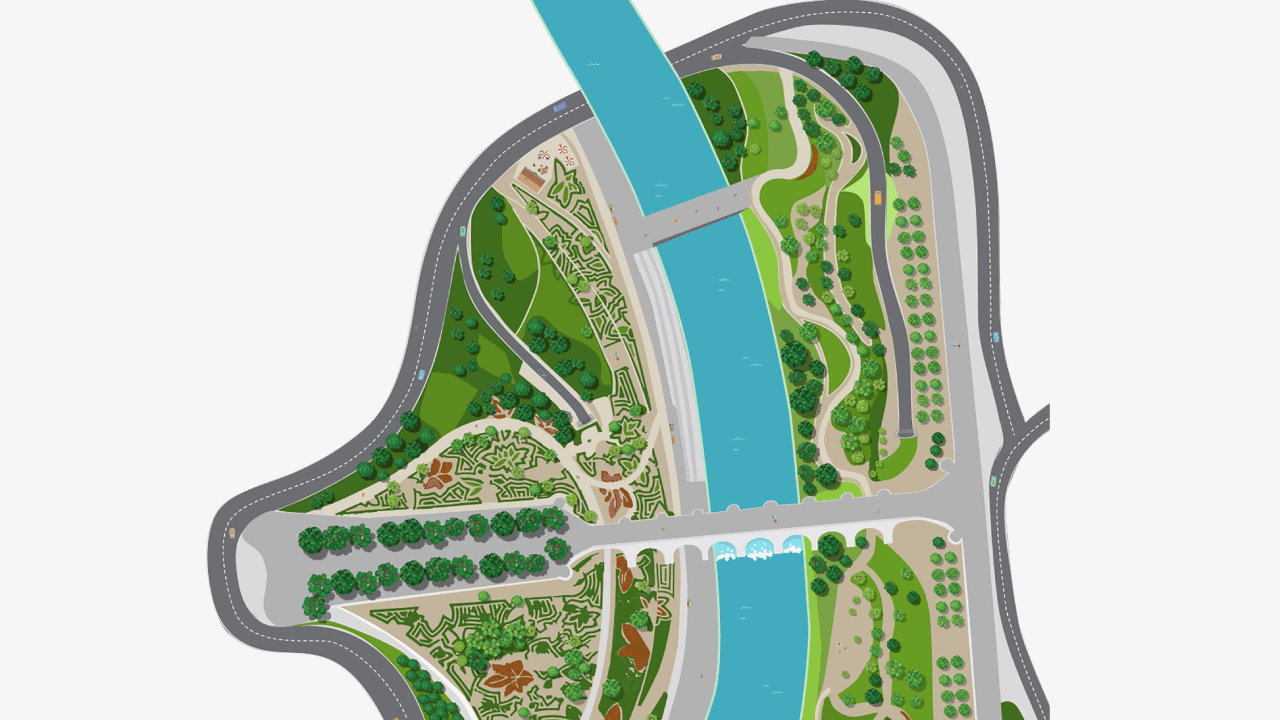The initial location of this enclave next to the Manzanares was no accident, and neither is the motto that opens this story nor the etymological meaning of Maŷrīṭ (abundant in water). The quantity of streams, springs and groundwater made this strategically vital area an impressive garden full of life, water and vegetation.
This historic motto of the city of Madrid alludes to the Muslim settlement which, at the end of the 9th century, gave rise to a small town that grew into what is today the Capital of Spain.
The origin of Maŷrīṭ - the name which later became Madrid - was a fortress erected by the Cordovan emir Muhammad I on a hill next to the Manzanares river where the Palacio Real and the Almudena cathedral currently sit. Its function, to monitor the passage through the Guadarrama Mountains to guard the old Visigothic capital, Toledo.
With the passing of the years and the centuries, Madrid continued to develop under caliphates and kingdoms, during the Middle Ages and the Industrial Revolution, from a small Castilian town to a booming European capital...until our era, in which its side streets, squares, avenues, palaces and parks are a historical compendium of golden eras and dark times that have shaped the city and the character of its inhabitants.
One of the periods that combines splendour and darkness is that of the urban development of the second half of the 20th century. Madrid had grown in such a way and at such breakneck speed that its houses and roads began to spill out beyond the imaginable limits. This was undoubtedly good news: It signified an economic bonanza for a town that had survived a bloody Civil War; but on the other hand, it was impossible to take into account the potential future needs of a continuously expanding city.
Consequently, the growth of the ring road that surrounds the city was constructed in parallel and over the Manzanares river, which circles the central nucleus of Madrid from northwest to southeast leaving it on its North bank. That which was both a garden and a source of life became an extension of the asphalt, cement and concrete through which thousands of vehicles passed every day, transforming the setting into a focus of environmental and acoustic contamination.
In order to restore the small paradise that once existed on the banks of the Manzanares, between 2006 and 2011, work of titanic proportions was undertaken forever transforming the appearance of the Spanish capital: the excavation of the M-30 motorway and the regeneration of the area into a gigantic array of parks, gardens and sports area to benefit a population that has seen its quality of life increase thanks to the creation of this new space known as Madrid Río. This restoration, carried out by ACCIONA in the main section of the built-up area –Parque de la Arganzuela- meant the freeing up of 195,000 metres squared, which was extended to 232,700 metres squared or an area equivalent to 32 football pitches.
Throughout this huge expanse of nature, more than 6,500 trees have been planted, 130,000 shrubs and 44,000 metres squared of low water demand meadowland. Furthermore, this has been done following sustainability criteria providing native plants that require less water and installing a system of 184 automatic irrigation circuits, programmed, controlled and centralised by computer with a meteorological station.
Within its 3,500 metre perimeter run five kilometres of riverside walks and children's play areas, as well as beach areas and skating rinks.
The effects of this mammoth undertaking were immediate, and this enormous green lung generates 685 tonnes of oxygen per year, thus avoiding 171 net tonnes of carbon dioxide, equivalent to the emissions of 727 cars in a single day.
In 2012, ACCIONA´s performance was awarded by the Madrid Administration, the Official Chamber of Commerce and Industry of Madrid and the Madrid Confederation of Employers and Industries (CEIM) with the prestigious Diploma for Integration or Environmental Restoration Work.
Furthermore, as with all ACCIONA projects, throughout the entire process quality, environmental and sustainability policies have been applied as well as the use of electric machinery and vehicles and the recycling of materials to minimise CO2 emissions and to contribute to the sustainable development of the capital.
The construction of Madrid Río not only meant the creation of a green lung for the city; it is also about giving the city and its inhabitants back part of their history and their roots, to restore this garden in which one day, hundreds of years ago, the senses of those who erected Maŷrīṭ were aroused.
To discover more stories like this, visit the website ACCIONA.
